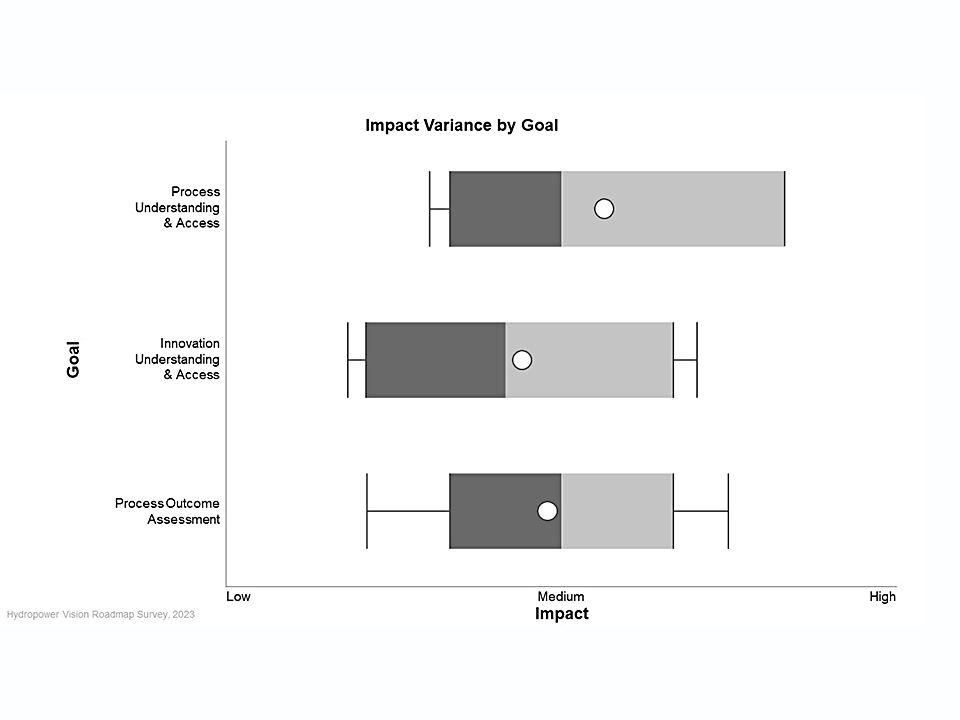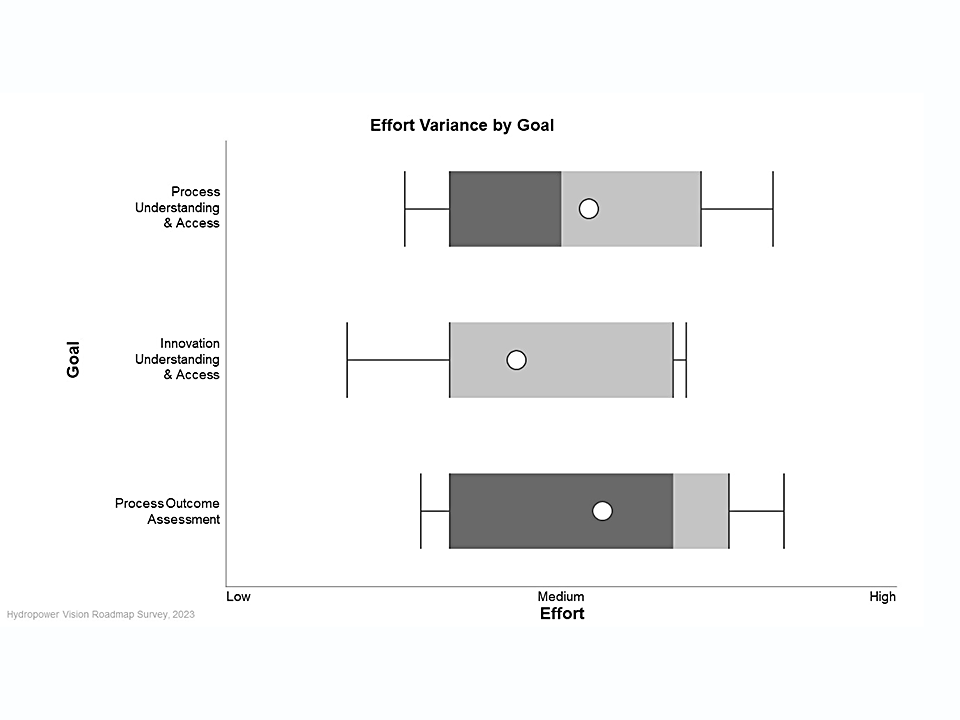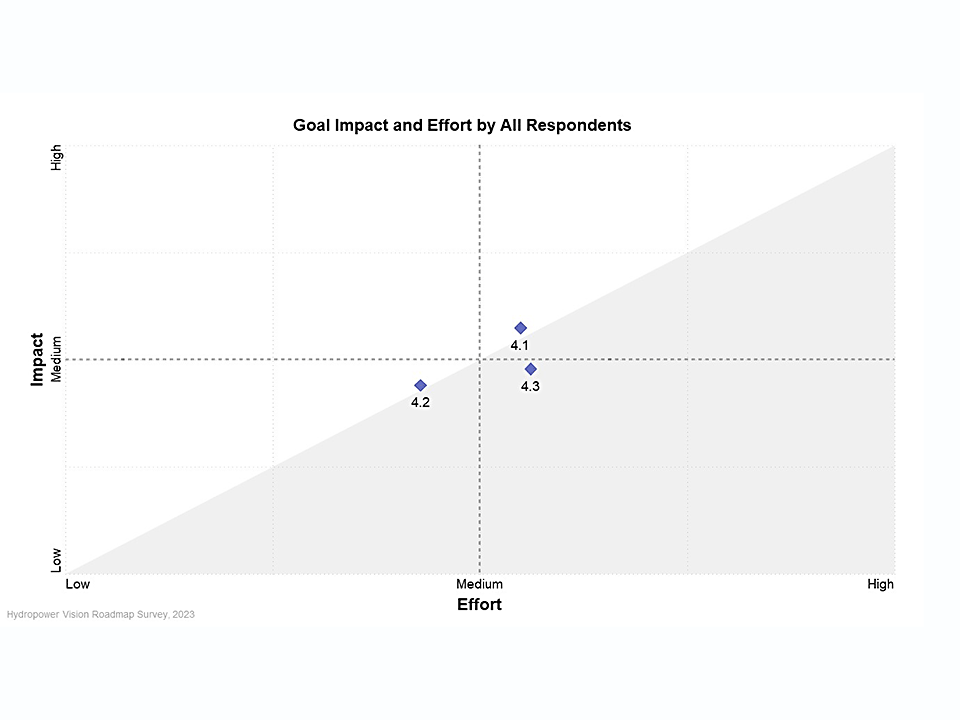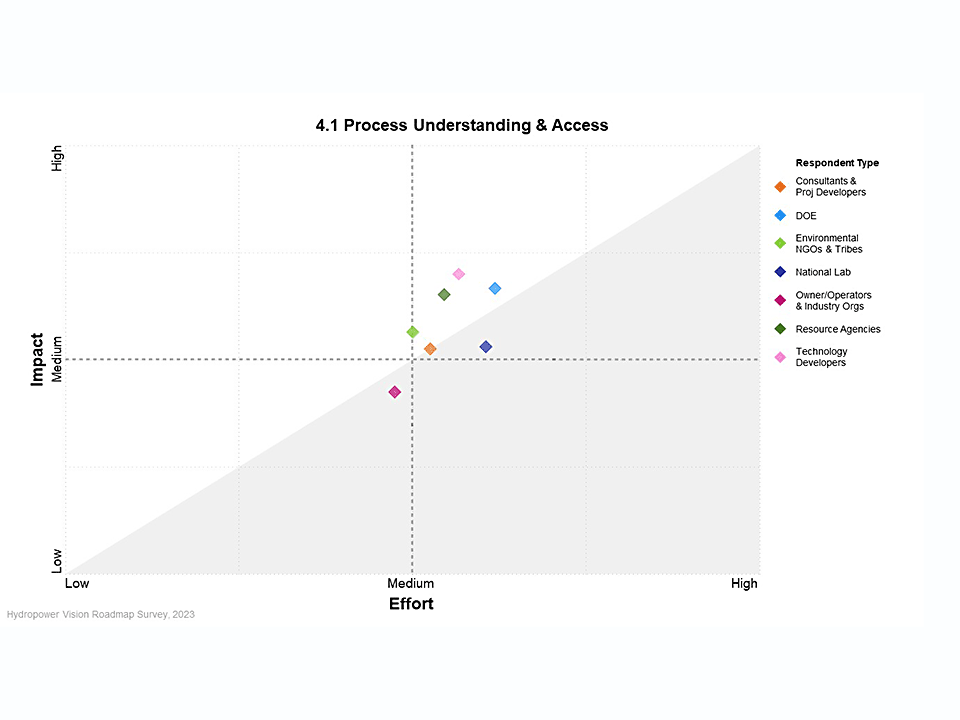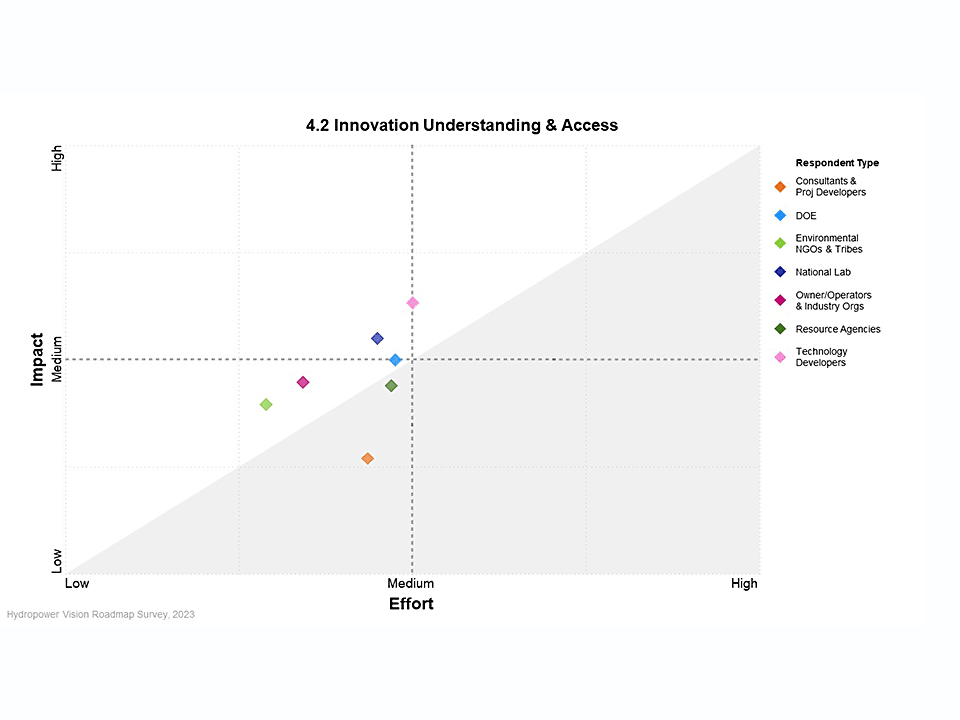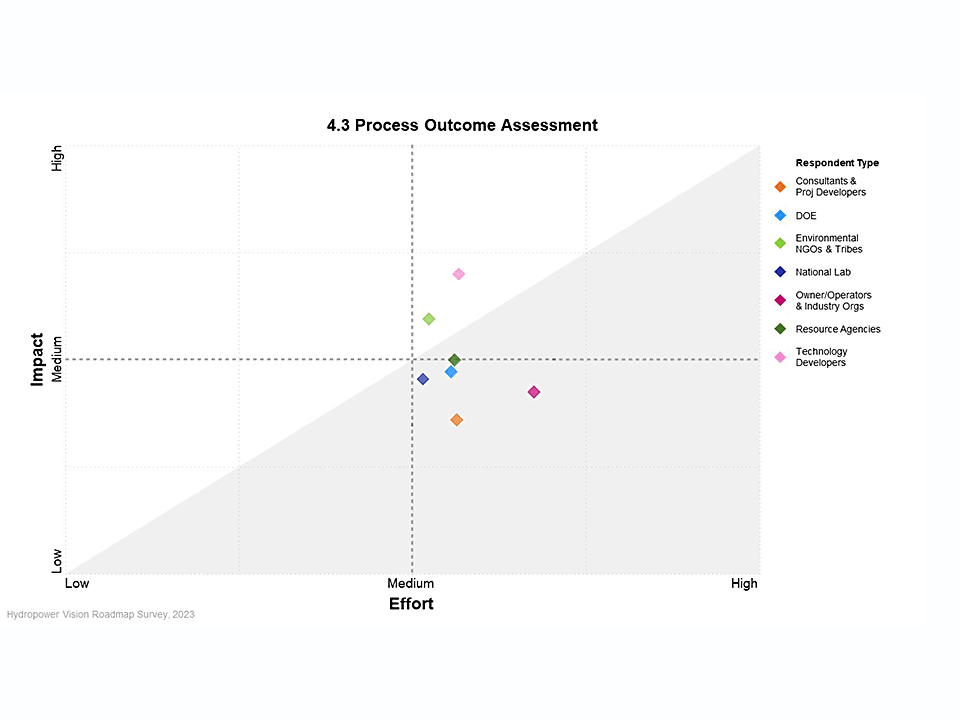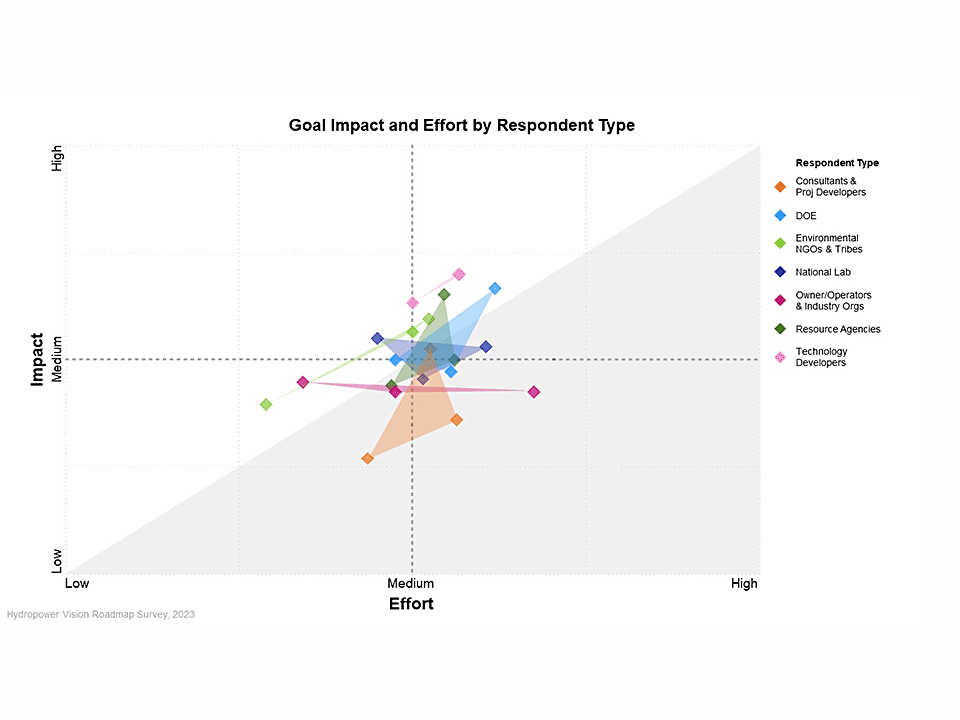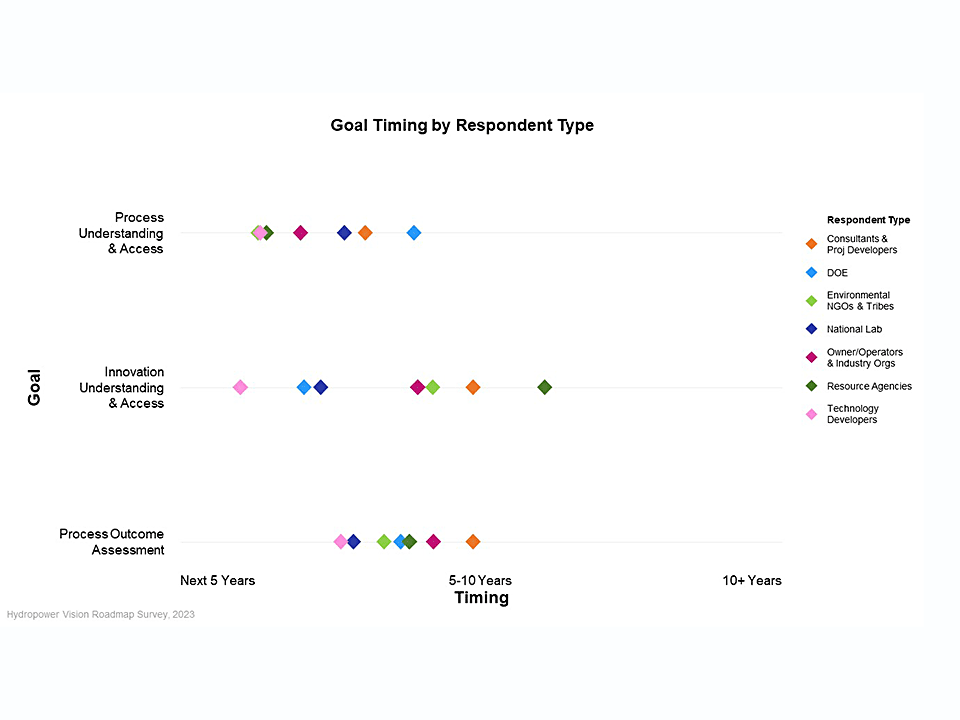 Hydropower is one of the oldest and largest renewable energy sources, and the regulatory environment governing hydropower has evolved iteratively over time. As a result, hydropower community members must navigate a complex set of approval and compliance processes administered by various authorities. The Optimized Regulatory Processes area identifies and encourages activities to improve the effectiveness and efficiency of federal and state regulatory processes governing hydropower development, operation, decommissioning, and removal. In doing so, regulatory processes can ensure a clean energy future that supports environmental stewardship, responsible water management, and public welfare.
Hydropower is one of the oldest and largest renewable energy sources, and the regulatory environment governing hydropower has evolved iteratively over time. As a result, hydropower community members must navigate a complex set of approval and compliance processes administered by various authorities. The Optimized Regulatory Processes area identifies and encourages activities to improve the effectiveness and efficiency of federal and state regulatory processes governing hydropower development, operation, decommissioning, and removal. In doing so, regulatory processes can ensure a clean energy future that supports environmental stewardship, responsible water management, and public welfare.
Through close collaboration, hydropower visionaries identified three goals to optimize regulatory processes by 2050:
- 4.1 Process Understanding and Access
- 4.2 Innovation Understanding and Access
- 4.3 Process Outcome Assessment
Whereas the first and second goals focus on opportunities and barriers within the regulatory process that affect community participation and scientific innovation, the third goal focuses on enhancing the outcomes of those processes. Together, these goals represent a pathway to more effective and efficient regulatory processes through enhanced understanding and participation by all stakeholders in the hydropower community.
Forum members have drawn upon their collective experience and expertise to identify activities that will help achieve each of these goals. Similar suggestions were combined and, if necessary, moved to the area and goal where impact and alignment were greatest. For example, several activities specific to regulation of fish passage technology were broadened to include other innovations that may benefit from improved understanding of and access to the regulatory process. This approach generated a set of activities that can direct collaboration, strategic planning, and progress tracking efforts across the hydropower community without creating silos of effort.
Goals & Activities
- Goal 4.1 Process Understanding and Access – Understanding of and access to the regulatory process is enhanced.
Activity 4.1.1 – Improve the study request process to make it more transparent, consistent, and predictable, while allowing flexibility for project-specific issues.
The current process and reasoning federal and state agencies use to develop and implement study requirements for hydropower licenses is confusing to some stakeholders. Assessing the current process would help identify areas where more clarity and predictability are needed.
Activity 4.1.2 – Enhance coordination among federal, state, and tribal regulatory review processes and provide more resources for agency, tribal staff, and stakeholders to participate.
Regulatory review processes for hydropower require participation by multiple authorities and diverse stakeholder groups, but there is a lack of resources to support participation. Enhanced coordination would help identify opportunities to streamline the process or increase the time and financial support available to participate.
Activity 4.1.3 – Develop a more consistent and effective process and timeline for project license surrender and decommissioning.
The current process and timeline for hydropower license surrender and decommissioning is not well understood by the hydropower community. More clarity and consistency are needed to ensure they can effectively participate by addressing environmental, social, and economic interests.
- Goal 4.2 Innovation Understanding and Access – Assessment and application of new science and innovation is enabled through the regulatory process.
Activity 4.2.1 – Establish independent forums to recommend regulatory pathways for incentivizing new science and innovation based on third-party testing, assessment, and consultation.
Environmental stewardship, responsible water management, and public safety are important drivers for the hydropower regulatory process and scientific innovation; however, there is a lack of understanding about what is impeding regulatory acceptance of new science and innovation and how to overcome it. Identifying new regulatory pathways may help enable innovative ideas that can support mutual aims.
Activity 4.2.2 – Integrate adaptive management approaches and standardized long-term monitoring protocols in regulatory processes to allow greater flexibility in adopting new science and innovation.
Adaptive management approaches and standardized long-term monitoring protocols can help foster the adoption of new science and innovation because they allow for adjusting project operations and mitigation requirements based on real-time monitoring. These approaches and protocols would provide greater flexibility and accountability for hydropower performance and license compliance.
Activity 4.2.3 – Research other energy and non-energy industries to identify risk assessment and adoption strategies for new science and innovation.
Like other industries, hydropower must address tensions between risk assessment, regulatory acceptance, and adoption of new science and innovation. Research on lessons learned from other industries could identify novel assessment strategies or adoption mechanisms that foster progress.
- Goal 4.3 Process Outcome Assessment – Decision-making outcomes are enhanced through regulatory process assessments.
Activity 4.3.1 – Conduct periodic, third-party assessments of the regulatory process with input from all hydropower stakeholders and develop recommendations for process efficiency improvements.
Periodic assessments of the regulatory process could identify issues and opportunities to improve its effectiveness and efficiency, especially as new changes or constraints are introduced over time. These assessments should be conducted by a neutral third party with community-wide consultation to ensure the process and recommendations are transparent and impartial.
Activity 4.3.2 – Develop standard indicators to measure regulatory outcomes for all hydropower stakeholders and provide recommendations for improving outcomes.
From hydropower developers to resource managers, the definition of beneficial regulatory outcomes is different for each sector of the hydropower community. Standard indicators for outcomes, such as power generated or habitat restored, are critical to enhance decision-making and could be identified during periodic process assessments (Activity 4.3.1).
Activity 4.3.3 – Develop recommendations for basin-wide environmental review processes and apply to river basins with multiple project relicensing proceedings planned before 2050.
The significant number of hydropower projects that will require relicensing soon, including many with different licenses and owners, presents a resource challenge for regulatory agencies and license applicants. Taking a basin-wide approach to relicensing could help increase efficiencies and improve outcomes through information and data sharing, as well as coordination incentives.
Survey Results
The 2023 Roadmap Survey sought to understand hydropower community perceptions of the impact, effort, and timing of Roadmap goals and activities, as well as the sectors that should be involved to ensure progress is made. Scroll through the images below to see the results for Optimized Regulatory Processes. Results for other areas can be found on their individual pages under the Roadmap menu.
Below are highlights from the survey results that correspond with the images above.
- Impact Variance: Survey respondents ranked Optimized Regulatory Processes (ORP) goals as having medium impact, and they ranked the Process Understanding and Access goal higher on average than other goals. There was more consensus on the impact rankings for the Process Outcome Assessment goal than other goals.
- Effort Variance: Survey respondents ranked effort like impact. Effort rankings ranged from medium-low to medium-high with Process Outcome Assessment ranked as highest overall effort.
- Timing Variance: To have maximum impact, survey respondents suggested ORP goals should be completed in less than 10 years. There was similar level of consensus across goals, but respondents suggested earlier timeframes were necessary for the Process Understanding and Access goal.
- Overall Goal Impact and Effort: Respondents ranked ORP goals focusing on Understanding and Access as having a slightly higher level of impact than the effort required, whereas the Process Outcome Assessment goal was seen as having the inverse relationship.
- Goal 4.1 Impact and Effort: Hydropower Owner/Operators and Industry Organizations ranked Process Understanding and Access lower impact and effort than all other respondents. DOE and National Labs ranked this goal highest in effort. DOE suggested the impact was greater than the effort required whereas the National Labs did not.
- Goal 4.2 Impact and Effort: Technology Developers ranked Innovation Understanding and Access highest in impact, and Consultants and Project Developers ranked it lowest. Environmental NGOs, Tribes, Hydropower Owner/Operators, and Industry Organizations ranked this goal lowest in impact but still more impactful than the level of effort required to complete it.
- Goal 4.3 Impact and Effort: Hydropower Owner/Operators and Industry Organizations ranked Process Outcome Assessment as needing higher effort than other respondents. Technology Developers, Environmental NGOs, and Tribes ranked this goal as medium-high impact whereas other respondents ranked it medium-low impact.
- Goal Impact and Effort Spread: Hydropower Owner/Operators and Industry Organizations consistently ranked each ORP goal as medium-low impact, but the average level of effort varied across goals from medium-low to medium-high. Consultants and Project Developers consistently ranked ORP goals as more effort than impact but showed the greatest spread of impact ranks.
- Goal Timing: Among all respondents, Technology Developers suggested the shortest timeframes for ORP goals, and Consultants and Project Developers tended to suggest the longest timeframes for completing ORP goals. Timing for Innovation Understanding and Access varied most among respondents from 5 to more than 10 years.


